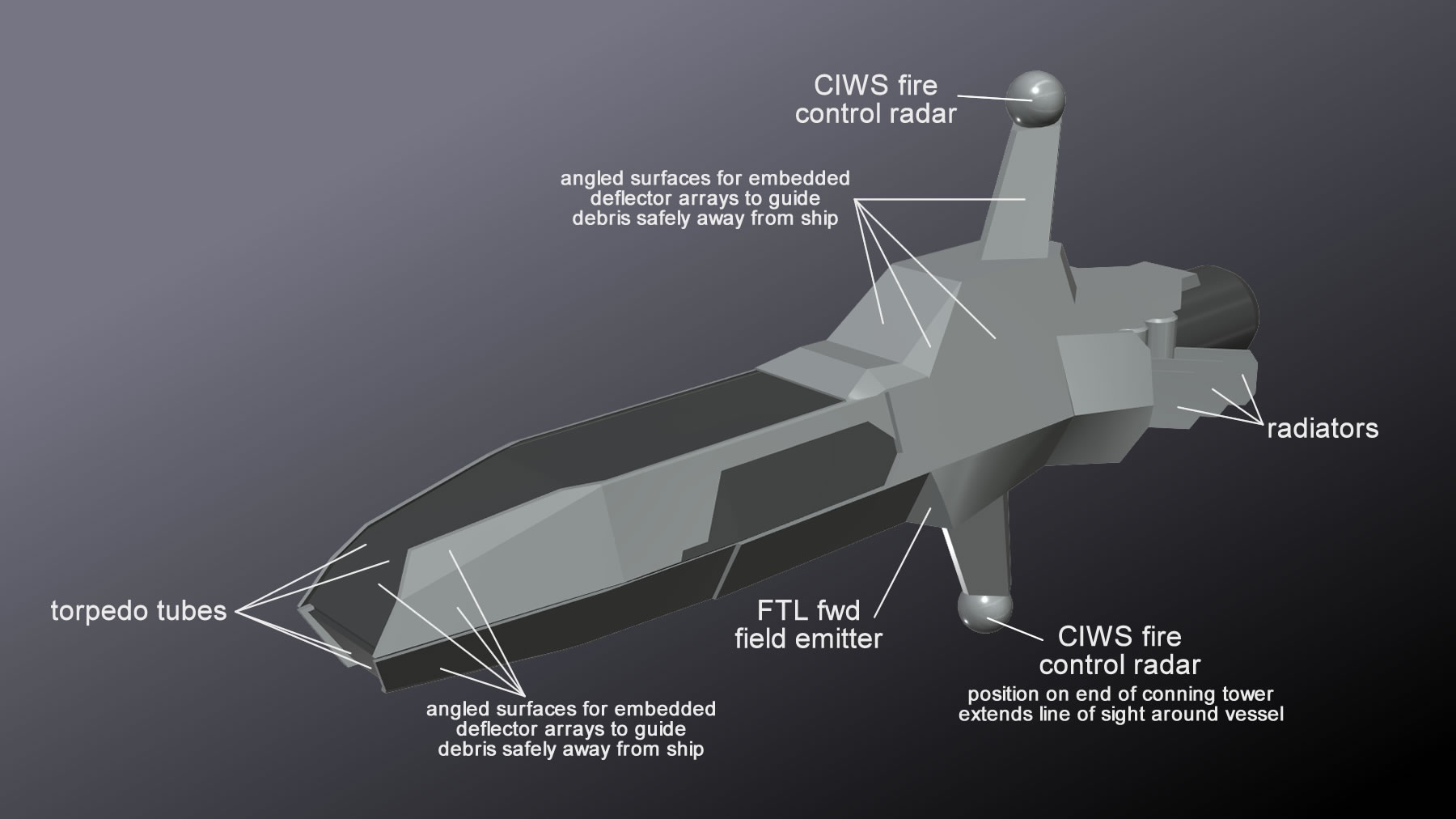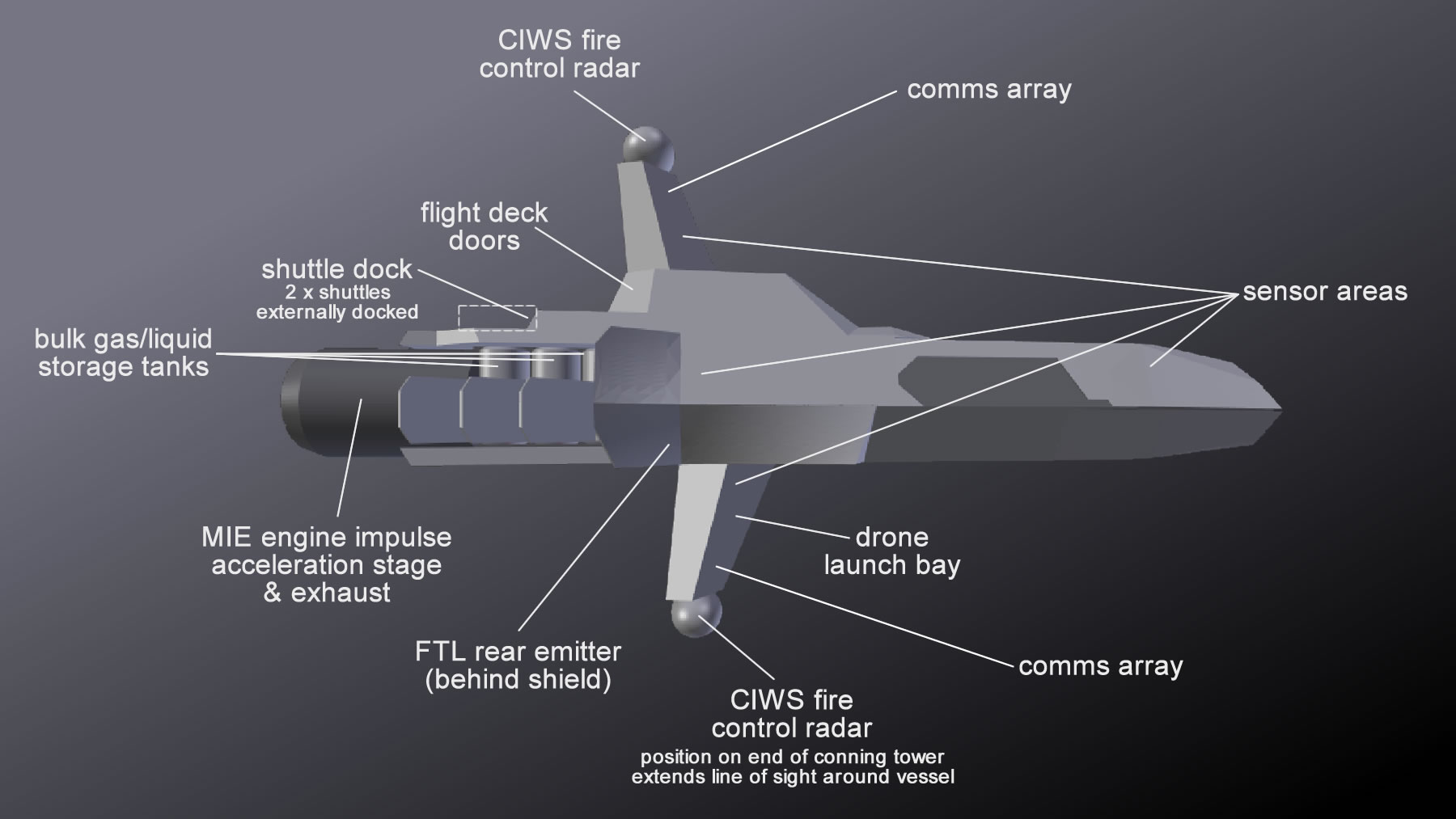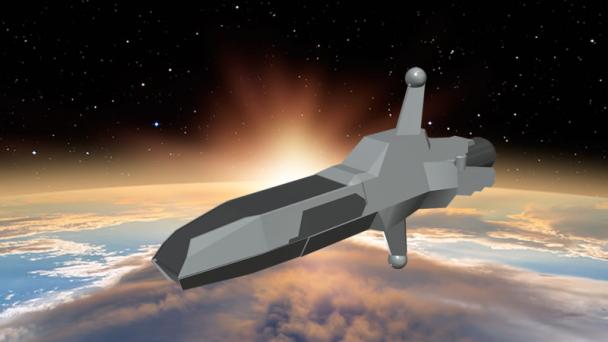Designing A Starship
A proposed design for Endeavour’s exterior has been around for a while now in basic form, described as resembling two destroyers flipped and fused together at the waterline. As the interior spaces are laid out and exterior components added the design has proven resilient, with only minor refinements made so far (although that could change at any time).
What is the thinking behind it… and how could an ocean-going design approach ever be considered a good fit for interstellar travel?
Endeavour’s design needs to meet a number of mission requirements as well as limitations imposed by extended interstellar operation. The size of the ship is limited by the capability of current engine technology to shift its mass, but habitable area must be maximised to ensure crew are comfortably accommodated for extended missions and there are sufficient working spaces to support scientific activity.
Exterior Approach
Within this size/mass envelope, minimising forward-facing surface area by adopting a narrow and long form factor also has advantages in space. Exposure to meteoroids and other debris in the flight path is reduced, with any encountered more easily deflected. The various angles of Endeavour’s hull help embedded deflector fields guide meteoroids away from the ship.
The armoring scheme also reflects these considerations, and assumes combat engagement will be engaged forward, with less easily protected components (radiators, engine exhausts, and bulk storage) held to the rear behind armour skirts.
This form factor is also the most efficient for generating a gravimetric displacement field - the alien-derived technology that allows Endeavour to travel at faster-than-light speeds. A minimal forward profile significantly improves the efficiency of the field (at least with only one field generator in use - the only one currently available to the ISDC).
 The two towers extending above and below the main hull are an exception to this approach. They’re needed to ensure surrounding coverage for defensive, sensor and communications systems, as well as giving sufficient vertical separation between those systems for three-dimensional imaging. Their shape is a continuation of the main hull’s deflective angles.
The two towers extending above and below the main hull are an exception to this approach. They’re needed to ensure surrounding coverage for defensive, sensor and communications systems, as well as giving sufficient vertical separation between those systems for three-dimensional imaging. Their shape is a continuation of the main hull’s deflective angles.

So the apparent similarity to ocean-going destroyers is more of a coincidence - different operating considerations producing a similar design. Although interestingly Endeavour’s proposed design checks in at around 170 metres long and a maximum 26 metre beam (width), with seven main decks. This compares with a 150m length and 21m beam across 3-4 main decks for a type-45 destroyer.
Interior Approach
Inside, the proposed design has been compared to a cruise liner rather than a military ship. Each of the 140-odd crew will have their own cabin, at a minimum 3 by 2 metres, although a bathroom will be shared between two cabins for all but senior officers. Recreation areas with different configurations for both physical and mental exercise have also been allocated.
This is substantially more area for accommodation than would be expected on a military vessel. Even before considering that a significant proportion of the crew will have non-military backgrounds, Endeavour is expected to undertake extended missions in the entirely unfamiliar and unpredictable environment of deep space. That’s a stressful enough situation without adding cramped living conditions, so the design philosophy has been to emphasise livability to the extent possible within the available area.
Endeavour is an explorer first, and a warrior second... but she is by no means a pleasure boat.
The mass driver weapons system that makes up Endeavour’s primary armament takes advantage of the ship's length to generate required launch velocities. The four launchers take up substantial parts of two decks, with room reserved for future addition of a primary beam weapon system when technology makes such a system viable.
There are significant working spaces including six dedicated and two mission-configurable science labs, placed forward to minimise potential interference from drive and engineering systems. Endeavour also has three workshops so that repairs and fabrication of unexpected mission-specific equipment can be done underway, without having to return to Earth.
Engineering spaces take up half of the lower four decks, with major systems such as the reactor, FTL drive and main engines requiring the height of multiple decks due to their scale. This means the decks are effectively conjoined, creating one large working area.
The proposed design is by no means finalised but demonstrates what the tradeoffs between speed, defence and habitability that challenge any naval architect might look like in deep space.
- Read more about Designing A Starship
- Log in or register to post comments



